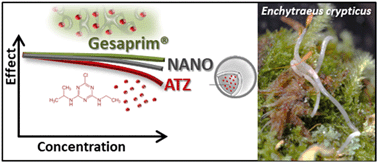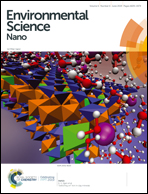On the safety of nanoformulations to non-target soil invertebrates – an atrazine case study†
Abstract
The use of nanotechnology in the agrochemical sector aims to increase pesticide efficiency, and at the same time provide more targeted delivery, reducing the application volume and thus its environmental footprint. However, the possible risks of these new nanopesticides to non-target organisms are still sparsely investigated. The aim of the present study was to investigate the effects of a nanoformulation of atrazine (nano_ATZ) to non-target soil invertebrates. The effect was compared with the commercial formulation (Gesaprim®) and atrazine (the pure active ingredient, a.i.), using the a.i. in a field concentration range using the soil invertebrate, Enchytraeus crypticus (Oligochaeta) as the non-target organisms. The endpoints evaluated included avoidance behaviour (2d), hatching success (11d), survival and reproduction (based on both the standard enchytraeid reproduction test (28d) and on the full life cycle test (46d)). Results showed that enchytraeids avoided soil spiked with Gesaprim and atrazine (a.i.), but not nano_ATZ. While all tested atrazine forms affected the hatching success (11d, early development stage), the toxicity in later stages, as measured in terms of survival and reproduction (46d) showed that Gesaprim was the least toxic (EC10 ca. 200 mg kg−1), followed by nano_ATZ (EC10 ca. 180 mg kg−1) and atrazine (a.i.) (EC10 ca. 100 mg kg−1). These findings are important to nanopesticide regulatory purposes, showing the potential effects of nanoformulation compared to the current commercial non-nano ATZ in a.i. field concentrations, and that information on additional test species and exposure routes are missing, as well as the longer term consequences.



 Please wait while we load your content...
Please wait while we load your content...